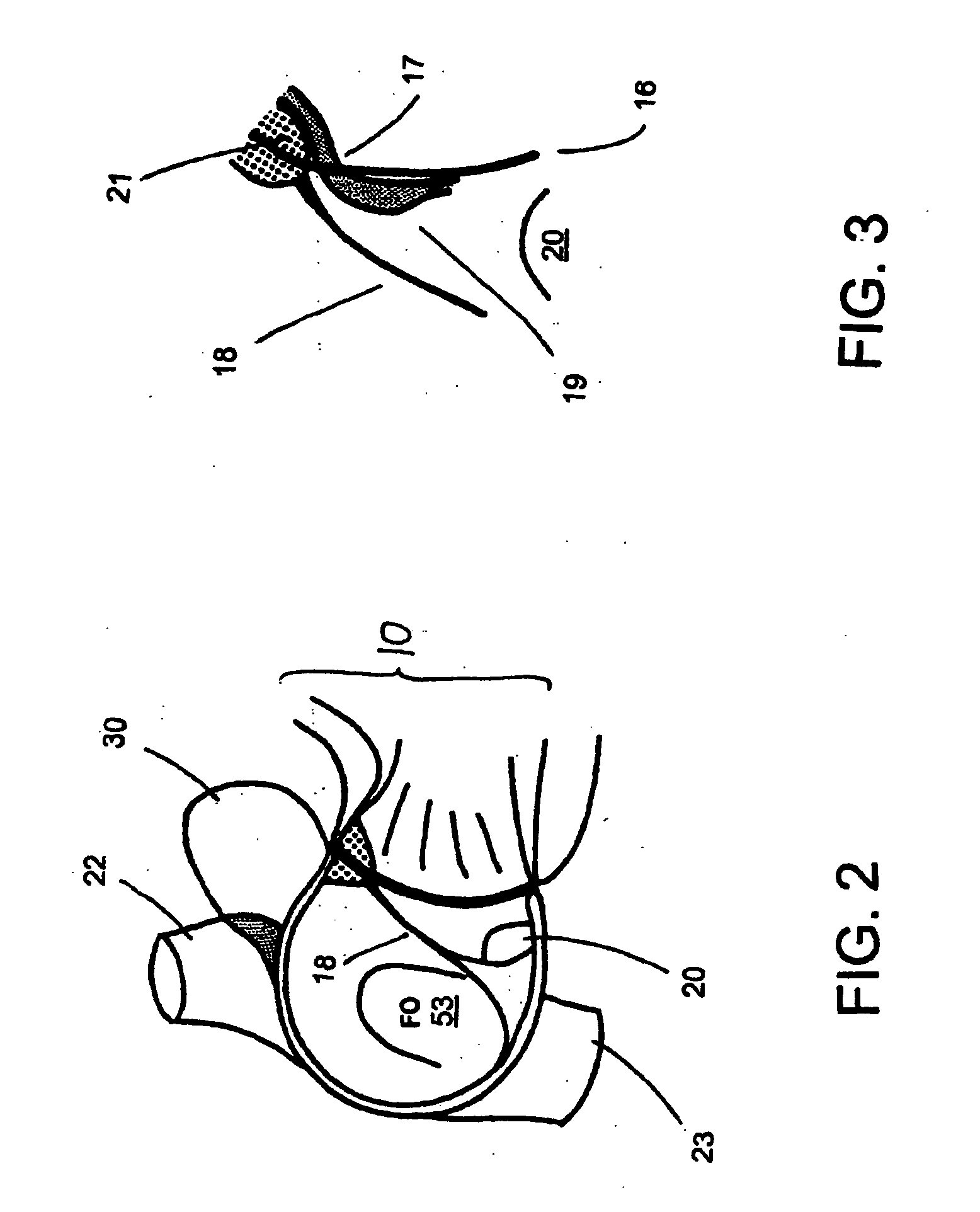Method and apparatus for percutaneous reduction of anterior-posterior diameter of mitral valve
a technology of mitral valve and anterior-posterior diameter, which is applied in the field of mitral valve repair, can solve the problems of mechanical valve carrying the risk of thromboembolism, biological prosthesis suffering from limited durability, and mitral regurgitation, and achieve the effect of promoting coaptation of mitral leaflets
- Summary
- Abstract
- Description
- Claims
- Application Information
AI Technical Summary
Benefits of technology
Problems solved by technology
Method used
Image
Examples
Embodiment Construction
[0038]FIGS. 1-15 show a device system and methods for treating mitral regurgitation by approximating the septal and lateral (clinically referred to as anterior and posterior) annuli of the mitral valve. While the description sets forth various embodiment specific details, it will be appreciated that the description is illustrative only and should not be construed in any way as limiting the invention. Furthermore, various applications of the invention, and modifications thereto, which may occur to those who are skilled in the art, are also encompassed by the general concepts described below.
[0039] The present invention provides an improved apparatus and method to treat mitral regurgitation. Of particular importance and a salient aspect of the present invention allows mitral regurgitation to be treated without resorting to open heart surgery. This is rendered possible not only by the realization that the coronary sinus of a heart is near to and at least partially encircles the latera...
PUM
 Login to View More
Login to View More Abstract
Description
Claims
Application Information
 Login to View More
Login to View More - R&D
- Intellectual Property
- Life Sciences
- Materials
- Tech Scout
- Unparalleled Data Quality
- Higher Quality Content
- 60% Fewer Hallucinations
Browse by: Latest US Patents, China's latest patents, Technical Efficacy Thesaurus, Application Domain, Technology Topic, Popular Technical Reports.
© 2025 PatSnap. All rights reserved.Legal|Privacy policy|Modern Slavery Act Transparency Statement|Sitemap|About US| Contact US: help@patsnap.com



